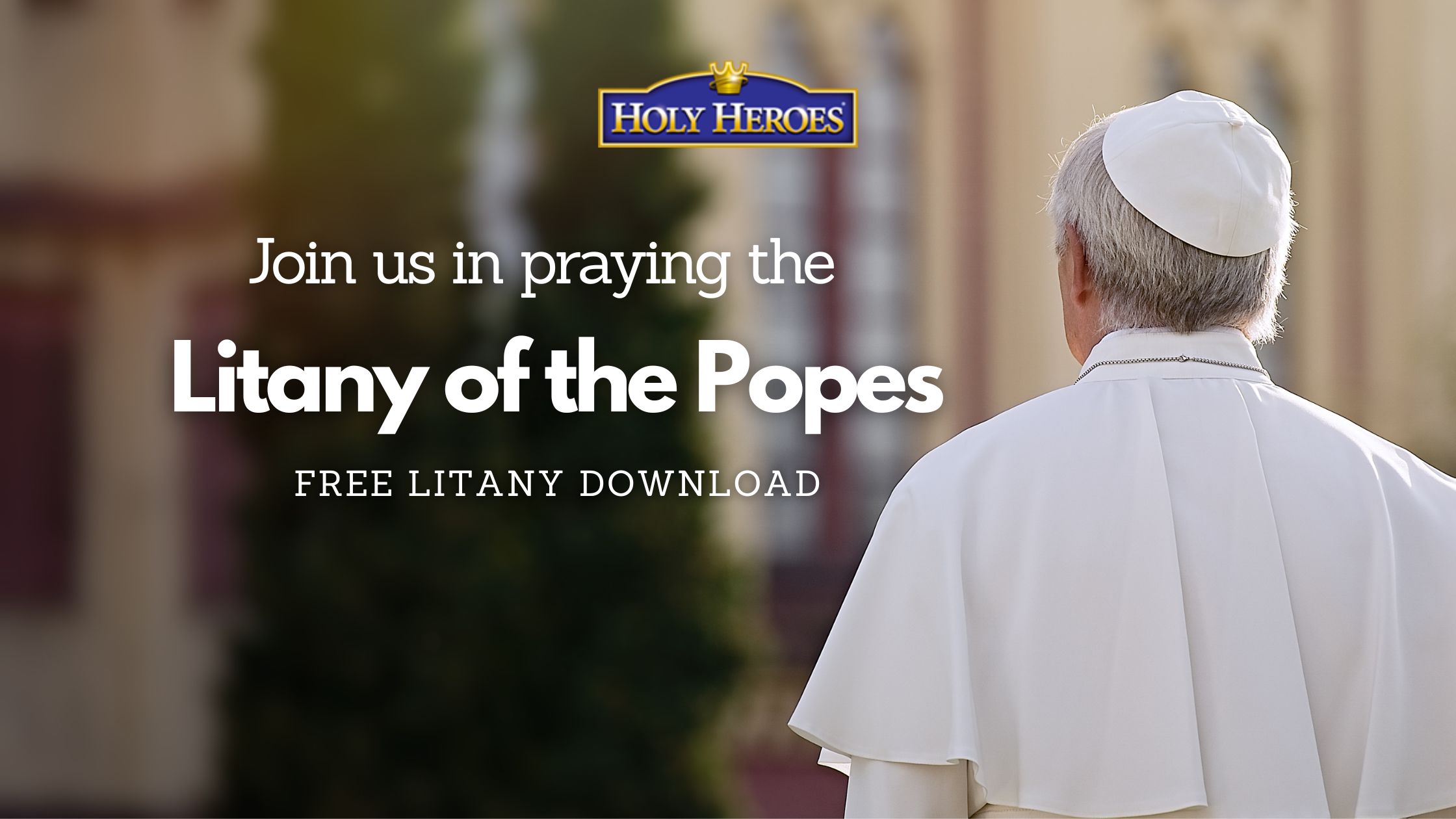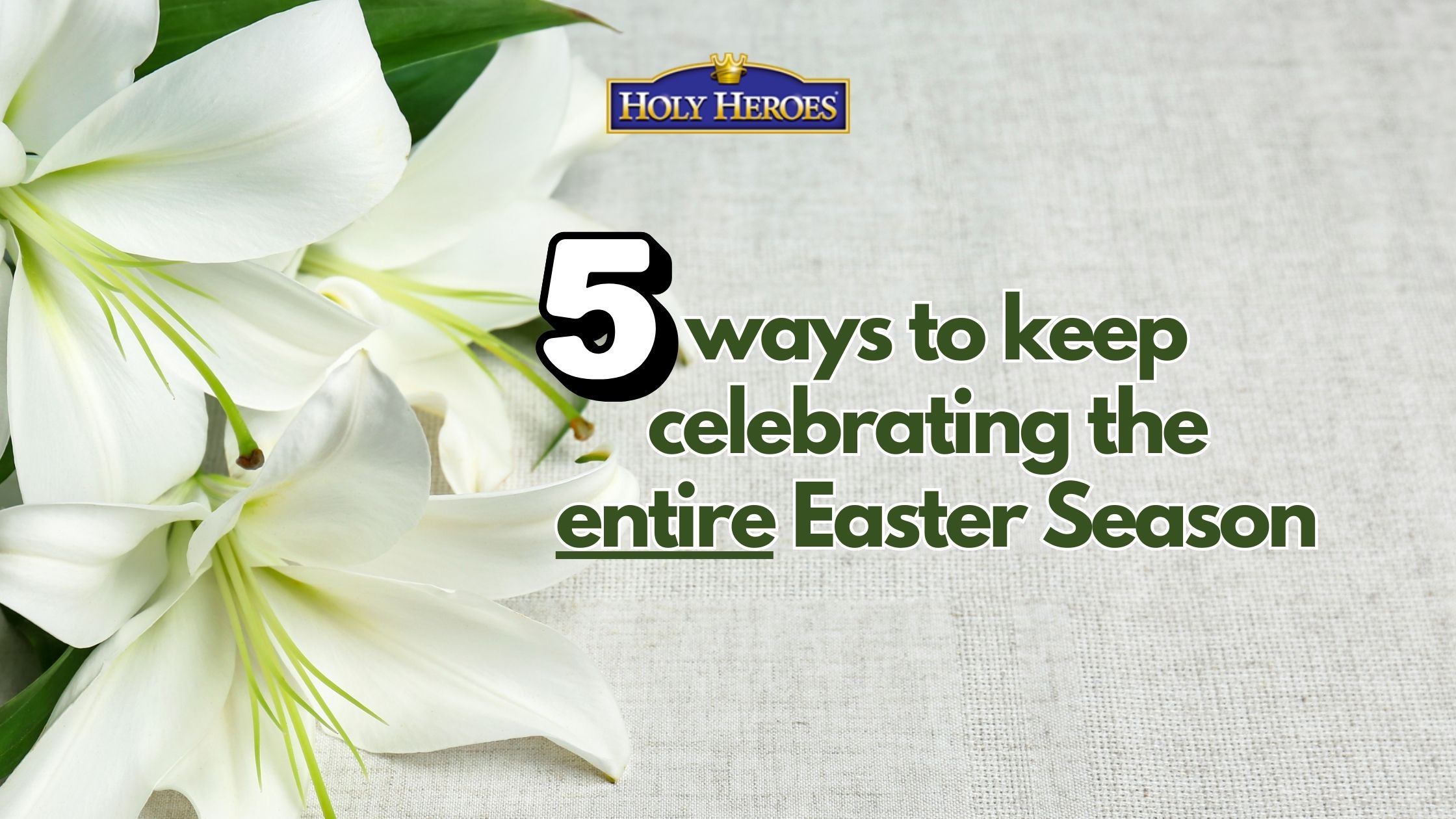What exactly is “spiritual reading”?
How does a Catholic form a habit of regularly doing it?
It’s easier than you think with this 4-step approach!
Many years ago, I was given a book by Fr. John A. Hardon called Theology of Prayer.
I didn’t read it.
Then, recently, I happened to pick it up. It is a short book, written in an easy style.
While there are many things in this little book that make it noteworthy, I was caught off-guard by his hard-hitting, no-holds-barred call for a returned attention to…spiritual reading.
Fr. Hardon writes, “Who needs spiritual reading? Everyone who wants to be Christlike!“
Wow.
He acknowledges that, unfortunately, many people are unsure of what constitutes “spiritual reading” and are nervous about delving into the practice.
It sounds like it needs to be difficult reading…in dense publications…about academic stuff…that is completely esoteric. Oh: and full of big words, too (like “esoteric”).
He says these fears and misgivings are misplaced as spiritual reading is reading things which were written: “to assist the believer to better know, love, and serve God and thereby become more God-like.”
He continues, “Spiritual reading is necessary as the normal way of nourishing the Christian faith, which means getting food for the mind so that the will and affections might love and serve God accordingly.”
And there’s an easy way with just a few minutes per day! Really.
Just 15 minutes a day is sufficient. I know how busy it is in families with children…so sneak away somewhere for just a short time. Your brain actually works better to absorb things in short “bursts” of focus.
And you don’t have to read heavy and “theological” and forbidden tomes. Really.
The purpose isn’t to approach this like a class at school, but to simply keep the Faith all around you and to feed your mind with the practice of it, not to cram for a test with a bunch of new information. Marinate your mind, simmer in the Faith, don’t sear your brain all at once!
And you can even do this with your children–really! Read on!
Fr. Hardon lays out the four categories of spiritual reading that Catholics, old AND young, should strive to cover:
1. Read Your Bible
“This necessity is not only for survival, but it is also and especially for spiritual growth,” writes Fr. Hardin. “If I wish to have God on my mind during the day, I must read about God and what He has to say. That is why He spoke.”
It is easy enough to pick up a Bible and read wherever you happen to flip it open. But there are also more structured ways to go about Scripture study that can be greatly beneficial. For younger Catholics, there are a plethora of options for reading the Word of God and learning the stories of the Bible.
And the better you know the “story” of the Bible, the easier (and more enjoyable!) it becomes. Start with what soon-to-be-beatified Fulton Sheen suggested as the Bible to “get that story” (and Dr. Brant Pitre concurs)–right here.
You also need to understand the context of the “fullness of time” when Jesus appeared on the earth–that time and place was selected by God the Father. Here is a great book that your kids will devour (and you will learn quite a bit, too): Who is Jesus, His Life, His Land, His Time.
HINT: read and ponder and discuss with God the Mass Readings for the day. The USCCB has an easy to use calendar–click on the day and you get the readings. Covers a lot of the Bible in bite-sized portions.
2. Read Your Catechism
Fr. Hardin affirms that every Catholic must strive to possess an ever-deepening understanding of what the Catholic Church teaches. He writes, “If I wish to develop a strong Catholic faith that is clear and sound and unalloyed, I must read what the Catholic Church teaches since her teaching comes to me especially in written form.”
While you might think that the Catechism of the Catholic Church might feel like sitting down to read a textbook, there are also options to consider that break down the Catechism into smaller chunks. Especially for young children, materials that focus more on singular teachings in an age-appropriate approach (The Works for Mercy or The all-in-LEGO Catechism of the Seven Sacraments for example) might be a good way to get into this practice instead of actually reading the Catechism. The Beginning Apologetics set is full of Catechism references broken down to a level for teens and up.
However: you should have a copy of the Catechism in your home at least as a reference. It is actually quite clear and direct, with a great glossary, index, and Table of Contents–with everything cross-referenced. If you don’t have it, get it.
3. Read Your Church History
In the modern age, it is easy to think our struggles are the greatest the Church has ever faced.
Fr. Hardon warns Catholics to be neither so conceited nor so desolate: “The Mystical Body has a history. It has had centuries of suffering and persecution. It has struggled and fought with error, and has marvelously, not only survived but thrived on the opposition.”
With a history that spans centuries, it would be nearly impossible for a Catholic to read everything and it can quickly become overwhelming for a young reader. Rather, focus on shorter works that will inspire their minds while also providing accurate and cohesive information. Learn the history of the Church!
Therese (the history-reader in our family) has a suggestion: read historical fiction by Catholic authors. These authors will put things into a Catholic worldview. Then, having become acquainted with things in a “story” format, the historical record makes more sense and is easier to absorb.
4. Read Your Saints
Probably the most frequented form of spiritual reading, Fr. Hardon reaffirms the simple theme that “only saints reproduce saints.”
Fr. Hardon writes, “If I wish to become holy, I must read about holy people. Their faith will strengthen mine. Their trust in Divine Providence will encourage mine. Above all their victory over self, the world and the evil spirits will spur me on to victory. How we need this encouragement!”
The Saints lived the Faith. We want to do that, too.
This area of spiritual reading is rich in options and there are many books to pick for both young and old. For more advanced Catholics, the actual writings of the saints provide boundless inspiration. For younger Catholics, the best gateway into this form of spiritual reading is learning the stories of the holy men and women of God who are our extended family in Heaven.
Your children can begin this practice even before they can read: by listening to Glory Stories, of course! That’s why we make them!
Spiritual Reading “Intimidation”
It can all seem so intimidating.
When you’re an adult, you think you should read something thick…not the thin books with big print for younger Catholics.
Wrong! The saints and great spiritual writers often wrote their practical guidance simply, directly, and in thin books and letters!
Here is a list of books (all under 130 pages) to help any Catholic begin spiritual reading in bite-sized pieces:
Trustful Surrender to Divine Providence by St. Claude de la Colombiere (this short profound book is an absolute must-have–it will change your perspective on all those times things “don’t go right” for you or your loved ones)
True Devotion to Mary by St. Louis de Montfort (talk about Scripture coming alive!
Overcoming Sinful Anger by Rev. T. G. Morrow (we live in the world surrounded by anger–here’s how to deal with it)
How to Make a Good Confession by John A. Kane (contains short, marvelous chapter breaking the Sacrament down to help you comprehend it, tying the Scripture and Catechism together)
The Sign of the Cross by St. Francis de Sales (you’ll be able to teach your children so much about this most-common of prayers!)
What now?
Newly inspired by the writings of Fr. Hardon, spend some time today reflecting on how you will integrate spiritual reading into your personal prayer life and the greater prayer life of your children. The best way to ensure that your children continue a regular habit of spiritual reading is to encourage it when they are young.
Lunch time? Right after dinner? Before night prayers? During snack break? Or in bed at night for your bigger kids?
Not another “class” or long session–just 15 minutes of quiet time.
Just be certain to give them books that will inspire their love for the Bible, the Catechism, the History of the Church, and the Saints!
is the Brand Manager for Holy Heroes after handling many other roles over the years. Make sure you sign up for our emails to receive more of Clara’s writing!





